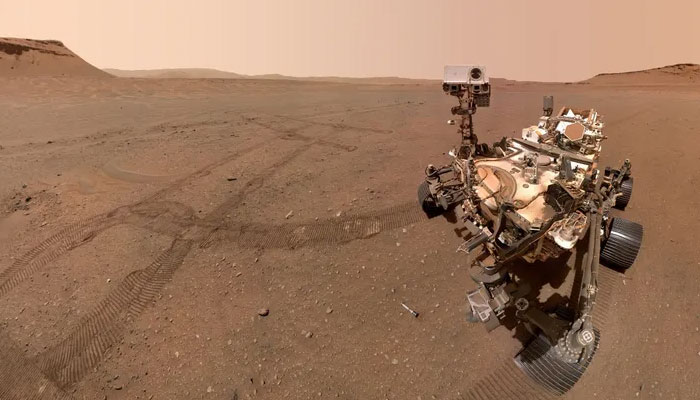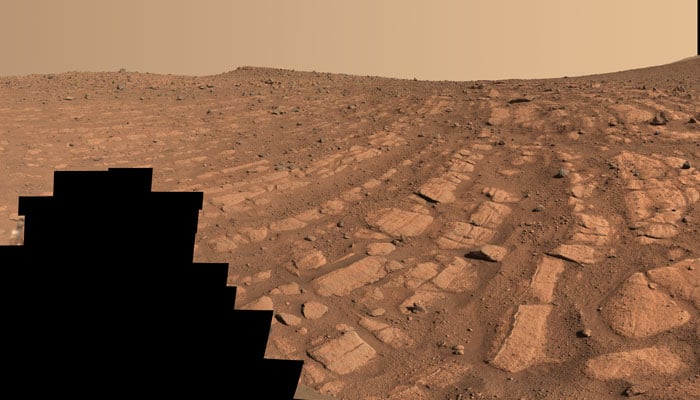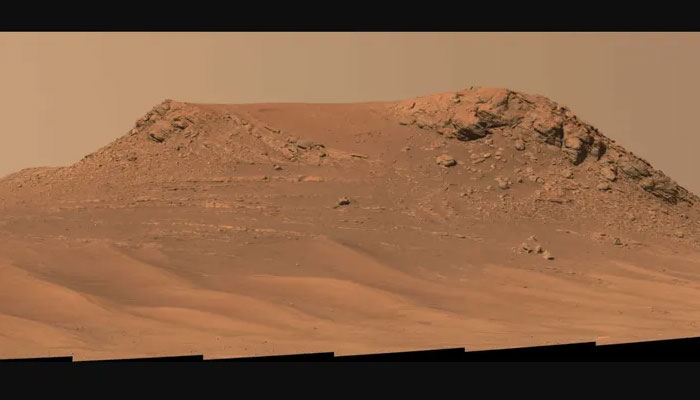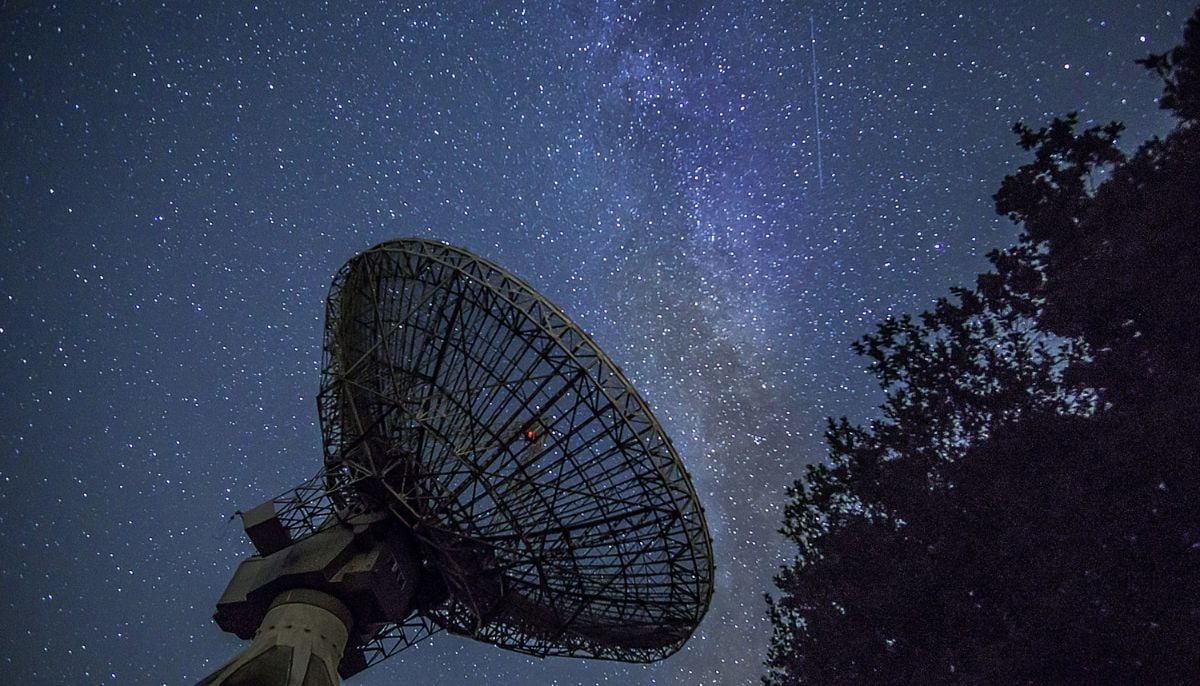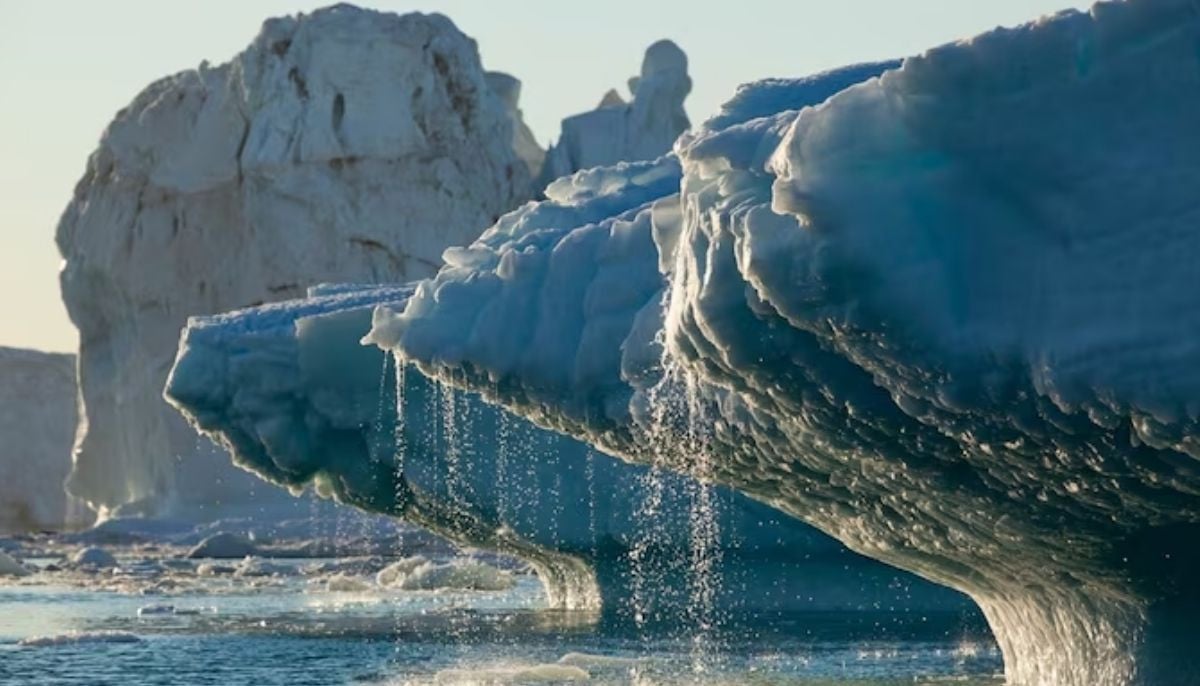NASA's Perseverance Rover may have discovered waterway in Mars
Since 2021, Perseverance Rover has been looking for ancient microbial life on Mars
NASA's Perseverance Mars Rover has revealed remarkable pictures from a place which may have been a deeper and fast-moving river on the red planet.
According to NASA, scientists never found evidence of such a river. It also said the river was a part of waterways that flowed in Jezero Crater.
Since its landing in 2021, the Perseverance Mars rover has been wandering in cater and has been looking for traces of ancient microbial life.
The rover has been observing an 820-foot-tall pile of sedimentary rock that suggests that they may have been water.
With the help of images from the rover's Mastcam-Z instrument, mosaics showed coarse sediment grains and cobbles.
Libby Ives, a postdoctoral researcher at NASA’s Jet Propulsion Laboratory, said in a statement: "Those indicate a high-energy river that’s truckin’ and carrying a lot of debris. The more powerful the flow of water, the more easily it’s able to move larger pieces of material."
The rover captured a series of bands of layered rock within the crater called the "curvilinear unit," imaging one location called "Skrinkle Haven."
As the images leave NASA scientists at the conclusion of water on Mars, questions have been raised about what kind of water was present there.
They say that there could be a winding or braided river. As seen from the ground, the layers appear to be aligned in a row show that they could be the remains of a river’s banks that shifted over time or those of sandbars that formed in the river.
The layers were likely taller, however, scientists suspect that they had been blasted by wind and carved down over time.
From Skrinkle Haven, there is another location located about a quarter mile called "Pinestand."
It is a hill which is isolated and has sedimentary layers that curve upward – including some as tall as 66 feet. Scientists suggest that these layers may have been formed. But scientists are also looking for other explanations.
NASA's team are also using the ground-penetrating radar instrument on Perseverance, Radar Imager for Mars’ Subsurface Experiment or RIMFAX, to look below the surface.
Perseverance’s deputy project scientist, Katie Stack Morgan, said: "What's exciting here is we’ve entered a new phase of Jezero’s history. And it’s the first time we’re seeing environments like this on Mars."
Morgan also added: "We're thinking about rivers on a different scale than we have before."
-
Blood Moon: When and where to watch in 2026
-
Elon Musk’s Starlink rival Eutelsat partners with MaiaSpace for satellite launches
-
Blue Moon 2026: Everything you need to know
-
Scientists unravel mystery of James Webb’s ‘little red dots’ in deep space
-
ISS crew of four completes medical evacuation with safe splashdown off California
-
Annular solar eclipse 2026: Here's everything to know about the ‘ring of fire’
-
World’s first ice archive created to preserve fast-melting glaciers’ secrets
-
NASA, DOE to develop Nuclear Reactor on the Moon by 2030
